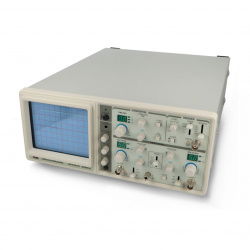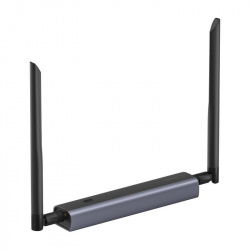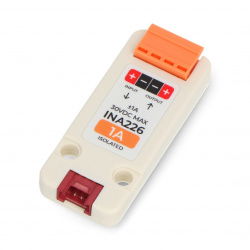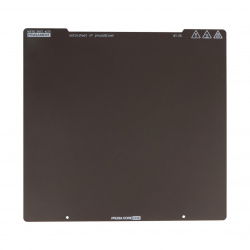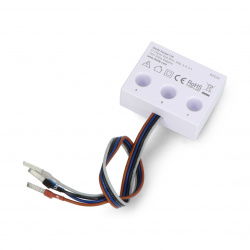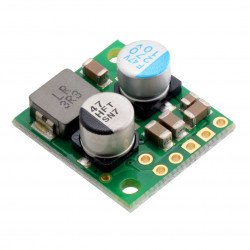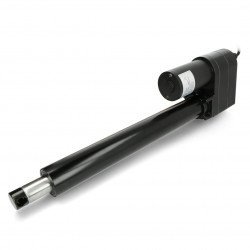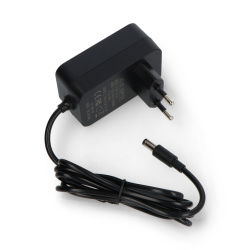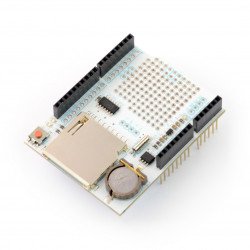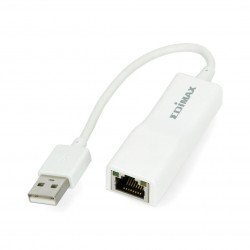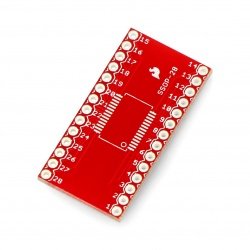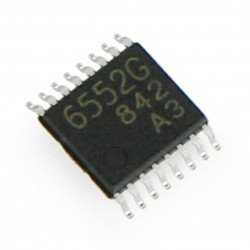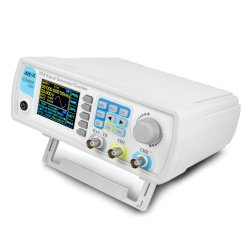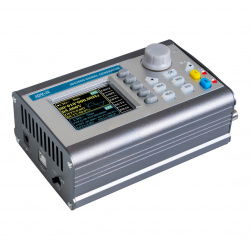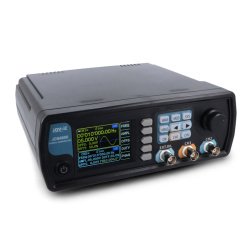In the category of “functional Generators” you will find high quality equipment needed in almost every laboratory of robotics or electronics. We have a device that creates all sorts of passages the functions of different frequencies. These can be devices that work as stand-alone generators (different parameters and capabilities) and accurate oscilloscopes with a built-in generator, and such that only in combination with a computer (except as a generator function) a gain function of the two-channel oscillograph.
Function generators
Function generator LongWei LW-1641 2MHz - 1 channel
The LW-1641 function generator is a precision tool for generating signals with frequencies from 0.1 Hz to 2 MHz . It offers a wide selection of waveforms, low distortion and...- Reduced price
- SPECIAL OFFERS
Functional generator DDS JDS6600 15MHz - 2 channels
Dual channel function generator with waveform generation up to 15 MHz, 200 MSa/s with 12 bit vertical resolution, 17 standard waveforms and 60 built-in 2048 point arbitrary...Signal generator with frequency counter JT-JDS2960
The JT-JDS2960 is an advanced dual-channel function generator with a built-in frequency counter that generates signals with a frequency of up to 60 MHz . The device supports...DDS function generator JDS6600-B 60MHz - 2 channels
The JT-JDS6600B is an advanced dual-channel function generator , capable of generating signals up to 60 MHz in a variety of waveforms. The device has a set of modulating...Functional generator DDS JDS6600 60MHz - 2 channels
Dual channel function generator with waveform generation up to 60 MHz, 200 MSa/s with 12 bit vertical resolution , 17 standard waveforms and 60 built-in 2048 point arbitrary...See also
Function generators
Our offer includes professional devices for generating specific voltage signals. These are tools used primarily by electronics and robotics engineers, but also in schools and technical universities. The function generator's task is to generate a voltage signal with shapes and parameters specified by the user (for example, a square, sawtooth or sinusoidal signal). In addition, the device should enable control of the voltage value, signal amplitude and its frequency or phase - ideally, changes could be made on an ongoing basis during measurements. Devices of this type are useful, for example, for testing prototype devices or for finding faults in damaged devices. They can be used by sending an appropriate signal to the input of the electronic system and checking whether the expected result appears at the output. They are used, for example, for repairs, tests or examinations of crossovers, acoustic amplifiers or low- or high-pass filters, band-pass filters, for determining the frequency response or for examining phase characteristics.
What do we offer in this section?
Our offer includes functional generators in various forms and price options. You can choose from equipment that generates waveforms up to 15 MHz or a higher model up to 60 MHz. We have a device that, when connected to a computer, becomes a complete measurement set with a two-channel oscilloscope and a function generator. An oscilloscope with a built-in function generator that can operate in the band up to 100 MHz may also be very useful. The equipment offered is always from the most respected manufacturers in the industry - Hantek, JDS6600, Siglent and Velleman.
Function generators - FAQ
A function generator is a device that allows the user to easily generate the desired voltage signal. This type of equipment most often allows you to determine the amplitude, frequency and shape of the generated signal (for example, sawtooth, sinusoidal or square). This type of equipment is often used when prototyping and testing new equipment, when repairing damaged equipment and, for example, for teaching students of technical faculties.
An arbitrary generator is a device with which the user is able to generate a signal of a freely selected shape. This means that you can literally draw your own design of the shape in which you want the signal to be generated.
Signal generators are used, for example, to test the response of various electronic components and devices to specific electronic signals. This means that an experienced electronics engineer can check whether a designed device with a non-standard signal waveform will actually work thanks to a series of appropriate tests.
The basic variables that the user can influence are the amplitude, frequency and shape of the generated signal. However, the signal shapes themselves can be either standard (e.g. sawtooth, sinusoidal, rectangular) or user-created, i.e. arbitrary.






























































































































































































































































































































